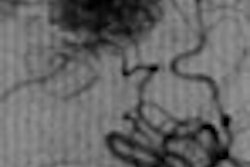Medical imaging vendors have successfully reduced radiation dose through a variety of new technologies, according to a new white paper from the Medical Imaging & Technology Alliance division of the National Electrical Manufacturers Association (NEMA) of Rosslyn, VA.
The white paper claims that the new advancements have led to dose reductions of 20% to 75% for many imaging procedures. The paper also restates the argument that the benefits from the use of radiation for medical purposes outweigh the potential risks of developing cancer from radiation.
Some of the more important technologies in reducing radiation dose include:
- The use of pulsed rather than continuous fluoroscopy, which has reduced patient dose by 50% to 75%
- Automated exposure controls that match dose to body size and thickness, reducing dose from 10% to 30% for routine CT scans and 50% for cardiac CT exams.
- Reduced-dose pediatric protocols based on patient age and weight that have reduced dose by up to 80% for infants and 50% for small children.
The report is available at www.medicalimaging.org.
By AuntMinnie.com staff writers
April 25, 2007
Related Reading
NEMA rebrands medical imaging division, April 18, 2007
NEMA offers critique of MedPAC report, March 7, 2007
NEMA, ACR to lead ethics talk at RSNA, November 2, 2006
NEMA comments on RVU proposal, August 23, 2006
NEMA publishes new FFDM QC standards, August 15, 2006
Copyright © 2007 AuntMinnie.com




















